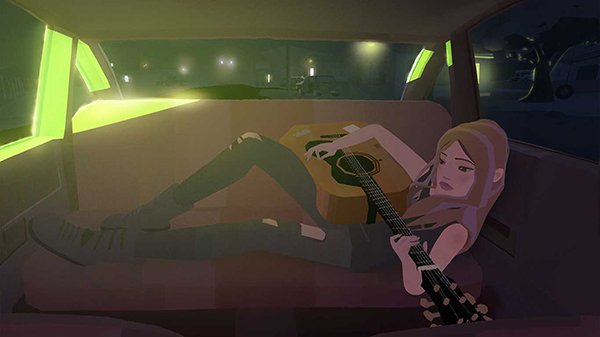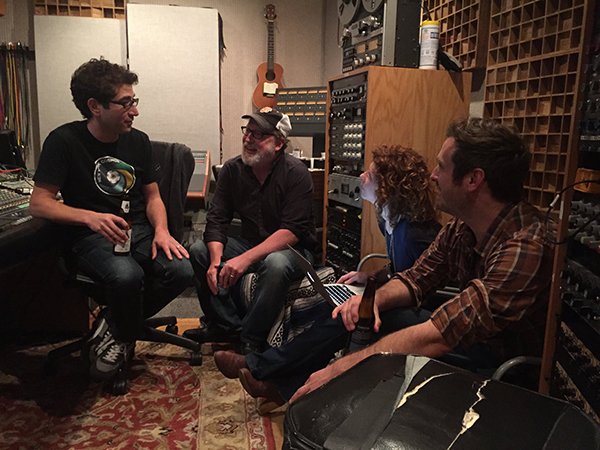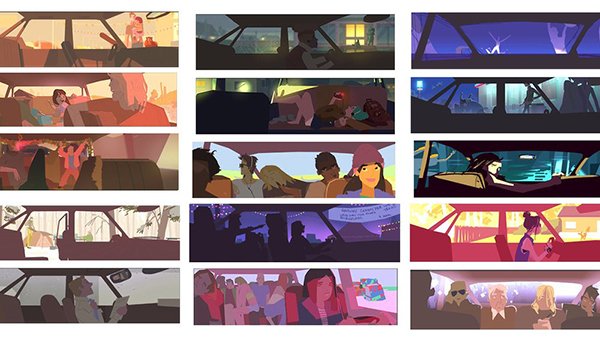“Pearl†of Google Spotlight Stories is a warm and moving film about the story of a father and daughter and an old car that has been in use for more than 20 years. We will see the warm heart that the two have spent in the car. There are also frictions between father and daughter. And the grown-up little girl is preparing to continue chasing her father’s musical dreams...
The film premiered at last year's Tribeca Film Festival and was nominated for this year's Academy Award for Best Animated Short Film. Although "Pearl" did not eventually win the Oscar-winning animated short film title, the Oscar nomination is already a major milestone in the development, and Xiao Bian made an even greater hope for the future of VR film and television. Therefore, we hope to further excavate the Oscar road for this work by interviewing its directors, producers, music directors, and film artists.
Director: Patrick Osborne
My father is an artist and was a toy designer. He likes to paint. He sacrificed a lot for his children like most parents, so that my brother and I can have the best life. One of the sacrifices is to abandon the cause and choose a family. "Pearl" is inspired by our relationship. Parents give us not only the material level, but also their taste, passion and time. The time I spent with my father when I was a child laid the foundation for all this today.

I think "Pearl" is a VR road musical. In 360 degrees and VR, you create a movie that has no borders or time-controlled constraints. This means that the story happens to you and the audience can look anywhere, anytime. For the director, it was difficult to accept giving control to the audience in the past.
I need to figure out how to tell a story spanning decades without using the editing skills of traditional movies, and let the audience easily understand that time has passed. In order to do this, I had to cut off time and transfer the audience from one scene to another. I used the car as the focus of the story, using the window for framing and composition, and placing the audience in the passenger seat.
Producer: David Eisenmann
"Pearl" is a story adapted to multiple media: 2D drama movies; 360-degree interactive stories, full immersive VR. All these versions are based on the same core story, animation, sound and music. But in order to provide the best version for each medium, we have to make different trade-offs. For example, the editing rhythm of 2D movies is much faster than VR, and the clip between scenes is almost twice that of the latter. In collaboration with Evil Eye Pictures, we took advantage of one medium to complement the other: In the 2D version, Patrick actually "cameras" the scene in a 360-degree environment and uses the phone as a camera. Editor Steven Riley stitched out the film based on these pieces, just as he did in the production of a documentary.
This result provides us with a rare opportunity for us to see how the director tells the same story in all different media. The VR version feels more like you are really sitting in the passenger seat and is in the same room as the protagonist. The 2D version is more like watching a home movie. Each version has different forms of intimacy, but they can all bring you closer to the lives of these characters.
Director: Patrick Osborne
As a fan of modern ballads and American country music, I chose to package the entire story in a song. "No Wrong Way Home" perfectly fits in and complements the visual style of the movie. The lyrics and images leave viewers the opportunity to review and listen to their own space.
Music and Sound Creative Director: Scott Stafford
Patrick hopes that the story can unfold with the music, the songs passed from father to daughter, and cars. After searching extensively for lyricists, he eventually chose Alexis Harte and JJ Wiesler because the refrain section of their work contained "there's no wrong way home". This sentence. And this is exactly in line with Patrick's ideas and early blueprints.

We had lyrics, so we invited Nicki Bluhm and Kelley Stoltz to perform. In order to make the music sound as real as possible, they recorded the singing and chatting of father and daughter, cars, sidewalks, parks, and radio stations. The song unfolds the story, but the sound design expands, so these details are important. Through sound effects and phonology, we try to make the audience feel like they are really in the car with these characters.
Chief Movie Artist: Cassidy Curtis
Patrick hopes that every change in props, environment, and lighting will work. 360-degree movies mean that we need to make a lot of assets, so their design needs to be relatively simple. We also know that the simpler it is, the easier it is to attract the attention of the audience: less detailed characters make it easier for the audience to empathize. The conceptual map of art director Tuna Bora establishes the visual style of the film: a “polygonal impressionism†artistic style consisting of simple graphics, expressing emotions through rich, expressive colors. And seasons.

My job is to provide tools for digital artists in the team. To do this, we need to think like an artist. In a typical movie or game, the U.S. trade union creates objects, creates textures, and lets the computer add realistic lighting, which indirectly generates color pictures. For "Pearl", we reversed this process: we used the final color directly, using a special palette for each scene. We hand-made attractive shadow shapes and soft color gradients. We made the edges rough, added streamer, and the final film grain twisted these elements together.
The duration of "Pearl" is only 5 minutes 39 seconds, but it includes 14 characters, 26 scenes and 38 pictures. As for the various versions, the Google team spent a lot of energy behind the scenes. If you are interested, users can watch videos via YouTube, Daydream's YouTube VR app, iOS and Android version of Google Spotlight Stories app or HTC Vive.
Guangzhou Yunge Tianhong Electronic Technology Co., Ltd , https://www.e-cigaretteyfactory.com